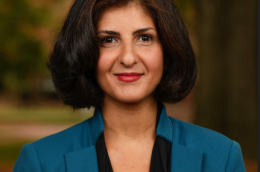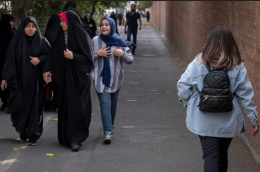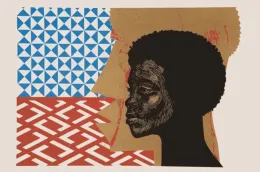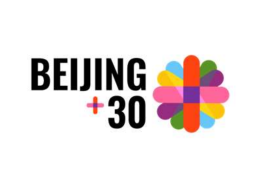Women's Leadership
Main navigation
As part of Xpress‘ annual Women in Business issue, we reached out to elected officials and municipal leaders seeking their stories about influential role models, lived experiences and obstacles they’ve faced. Below is our exchange with Maggie Ullman, Asheville City Council member.
Xpress: Who were the role models that inspired you to seek elected office?
Ullman: My mom. She raised three daughters while teaching English part time at two community colleges, and she often said she’d been “mommy-tracked” instead of full-time tracked — and she was right. But instead of accepting it, she organized, joining the part-time teachers’ union and negotiating for fair treatment.
As she neared retirement, she wanted to stay involved. She kept asking when a local candidate would announce so she could volunteer. When no one stepped up, she did — and ran for state representative, flipping a seat that had been Republican for 40 years. Watching her lead with courage and fairness taught me that leadership is about stepping forward when the moment calls.
How has your lived experience informed the way you lead?
Being a working mom, I know the challenge of juggling schedules and responsibilities while still showing up for your community. That perspective shapes how I lead: I focus on tangible solutions that make life manageable and meaningful.
I fight for policies that support families: affordable housing near reliable transportation, safe and welcoming parks and green spaces, and low-cost afterschool and summer programs. When families thrive, the entire community thrives.
Former St. Gallen National Councillor Hanna Sahlfeld-Singer has died, according to an obituary in the "St. Galler Tagblatt". The former SP politician would have been 82 years old next Friday.
Sahlfeld-Singer was the first female SP National Councillor from St. Gallen from 1971 to 1975 and was one of the first eleven female National Councillors ever, as the SP and the SP Women of the Canton of St. Gallen wrote in the advertisement. "She will be fondly remembered as a pioneer for equality and as a fighter for human rights, against poverty and for social justice," it continued.
Shortly before she took office, women in Switzerland had just been granted the right to vote at federal level. When Sahlfeld-Singer entered the Federal Palace on December 14, 1971, a porter told her that there were no guided tours on that day - to which she replied that she was there to be sworn in, as she said in an SRF interview in 2021.
Abstract
Advocates of women’s rights in many Muslim countries have long demanded the formation of state-level institutional structures that promote and protect women’s rights, in turn contributing to democratization and development. The design and impact of such structures, collectively referred to as national women’s machineries (NWMs), has, however, varied across contexts. This paper advocates analysis of the actors and factors that impact the design, influence, and function of NWMs, with an emphasis on the role of state gender ideology. It argues that NWMs, as formal state institutions, are never conceptualized and formed in a vacuum, with various competing interests impacting their design and function especially in non-democratic and unrepresentative contexts. Through a case study of NWMs in the Islamic Republic of Iran, it shows that despite efforts for cabinet-level women’s rights policy-making since the early 1990s, throughout the past decades such gains have faced backlash and reversal as a result of conservative ideological shifts, at times rendering such institutions illegitimate in the eyes of the Iranian feminist movement.
The act was a forceful symbol of her support for the movement and condemnation of the Iranian regime. “We cannot remain silent against the killing of women and girls like Mahsa (Jina Amini) or Armita (Geravand) who were killed merely because of their hijab,” she says.
Other prominent women, including celebrities, had removed their hijabs in public acts of defiance against Iran’s mandatory hijab laws during the protests. But Vasmaghi’s unveiling held particular significance. Until then, her public persona was that of a deeply pious scholar who consistently observed the hijab in a strict sense without showing any hair—even while lecturing in Europe on her expertise in Islamic fiqh (jurisprudence). What Vasmaghi clearly opposed was not veiling itself but its compulsory nature: Just months before her public unveiling, she had drafted an open letter to the Supreme Leader challenging the Islamic justification for forcing women to cover their hair. In it, she asked pointedly: “How can the Islamic Republic justify such strict enforcement of mandatory veiling when even the Quran does not explicitly require women to cover their hair?
Abstract
Much of the literature on women’s-rights activism in the Muslim world presents such activism as employing discourses either of egalitarianism (secular) or of complementarianism (religious). This article analyzes the recent framing of demands for women’s right to political office by elite Islamic women in Iran and Turkey in terms outside this dichotomy. Drawing on data gathered from personal interviews as well as on careful study of public statements and publications by elite women, or those backed by state institutions, this article demonstrates the inadequacy of understanding women’s activism in Muslim contexts as employing either an egalitarian or a complementarian approach by highlighting a more nuanced conceptualization of women’s-rights framing and organizing in accordance with shifting contexts and political ideologies. Specifically, it shows how Islamic women’s-rights activists who are closely affiliated with their governments at times strategically adopt a “gender justice” framing, as opposed to “gender equality,” to appeal to more conservative sectors of their society. This strategy can have important policy implications and lead to shifts in political discourse about women and politics. However, elite women’s backing from and affiliation with conservative ruling elites can lead some groups, particularly secular feminists, to perceive their use of gender justice discourse differently and to be dismissive of their efforts
Women of Iran, similar to those across many parts of the region, benefit from a long history of feminist activism. Refusing to remain silent to discriminatory laws, practices, and behaviors, women have been struggling for equality, freedom, and justice through grassroots mobilization against conservative religious rule.
The latest spark of feminist resistance on a mass level occurred in September 2022 over the killing of Kurdish-Iranian Mahsa Jina Amini from injuries she sustained while in police custody for allegedly violating Iran’s conservative hijab laws. Under the banner of, “woman, life, freedom,” women led vast street protests for months in demand for basic rights and liberties, risking their lives and freedoms in the face of a violent state crackdown. Building on decades of women’s rights organizing, women across Iran rose to express their frustrations from systemic gender discrimination codified in Iran’s laws, as well as their intentional marginalization from politics.
In this latest wave of protests, large sections of the population, regardless of gender, region, ethnicity, age, and religious identity, also joined in—recognizing that women’s demands for equality and freedom form the foundations of broader demands for democracy, human rights, and justice.











